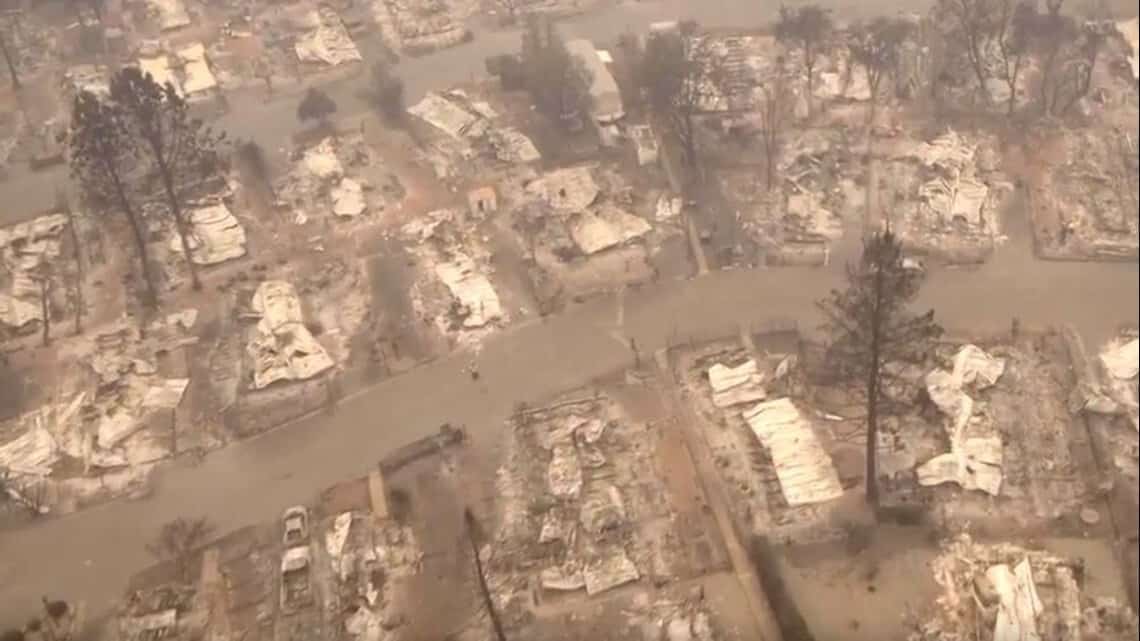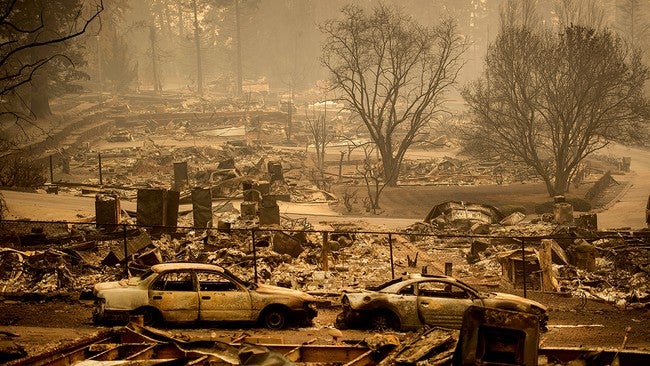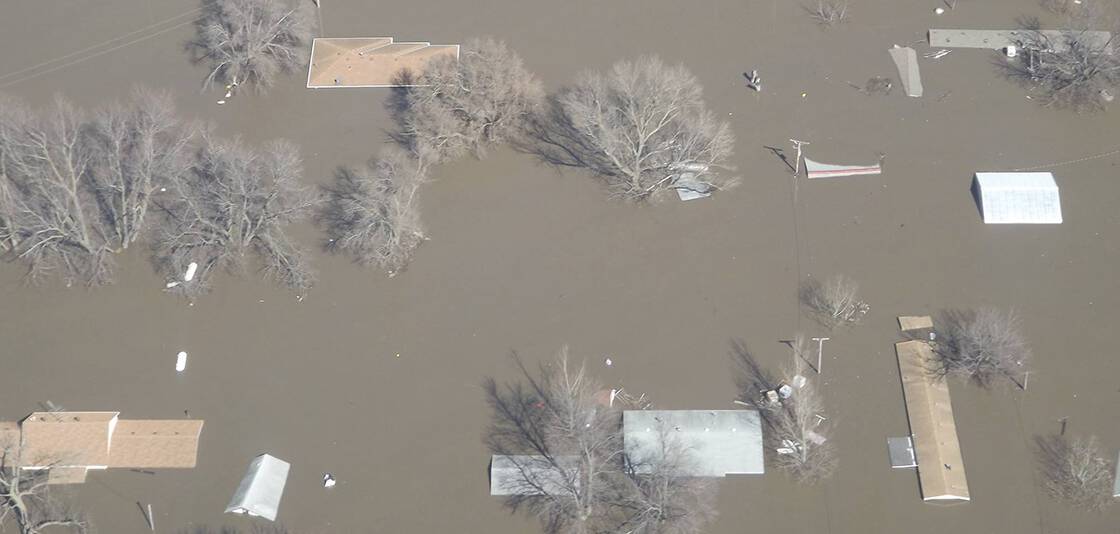FreightWaves features commentary from Market Voices – contributors with unique knowledge of numerous transportation/logistics/supply chain sectors, as well as other critical expertise.
Two articles last week caught my attention: First, there were reports of an unprecedented heat wave in parts of western and central Europe. The Washington Post reported that temperatures in France were as high as 114.6 degrees Fahrenheit (45.9 degrees Celsius), eclipsing the previous record of 111.4 degrees (44.1 degrees). Second, there were reports that Chennai, one of the largest cities in India, has run out of water. Bloomberg reported that the lakes that supply the city with water only contain about 1 percent of the amount of water they held a year ago. According to the same article, 21 cities in India will run out of water by next year.
Those two articles got me thinking about what the United States’ government says about climate change, and what that may portend for supply chain operations in the near future.
So I went seeking questions, and answers.
Here are three themes from the Fourth National Climate Assessment, Volume II: Impacts, Risks and Adaptation in the United States that I think are most relevant for people who manage and operate supply chains.
Climate change presents a systemic risk
Climate change will have adverse impacts that will be felt across the United States’ economy. The situation in California, and in parts of the midwestern United States’ provide a microcosm of what lies ahead.

Last November, California’s Camp Fire was a constant fixture on daily TV news. According to the Insurance Information Institute:
- It broke out in Butte County, in northern California on November 8.
- It burned 153,000 acres and destroyed 18,800 structures.
- It burned 14,000 residential and 530 commercial structures.
- The town of Paradise was destroyed by the fire.
Other reports indicate that the fire wasn’t contained until November 25. According to Munich Re, the Camp Fire resulted in total losses of $16.5 billion, with insured losses of $12.5 billion. This made it the costliest natural catastrophe of 2018.

This year Pacific Gas & Electric is proactively shutting off electric supply to its customers during periods of extreme temperature. This is its attempt to try to prevent a repeat of the 2017 and 2018 wildfire seasons in California, for which it is facing ruinous liabilities. This is an uncertainty that manufacturers and other producers in northern California did not prepare for, but for which they now need to create contingency plans.
Record rains and flooding in the Midwest have devastated agricultural and food supply chains linking some of the United States’ most productive agricultural regions with other parts of the country, and the rest of the world. What food production remains after the heavy rains and flooding is negatively affected by disruptions in transportation networks, as roads, rail lines and other critical transportation infrastructure is rendered unusable for sustained periods of time. This exacerbates the problem by making it more difficult, and more expensive, to get the agricultural produce that has not been destroyed to market.

Climate change creates an interconnected, cascading and cyclical source of uncertainty for supply chains
Supply chains connect suppliers and producers with their customers and consumers through a complex web of interconnected and mutually dependent linkages and intermediaries. A failure at any single node in the supply chain can create risk for every other node in the supply chain. For example:
- Rising sea levels affect the maritime shipping industry, potentially affecting ports as well as affecting ships at sea. In turn, this affects truck and rail service providers that move goods inland from the ports.
- The shifting, unpredictable and increasing severity of storms makes it more and more difficult to adequately plan production and delivery schedules with high levels of certainty in global supply chains. This makes production more costly for suppliers and producers, and it is not always possible to pass the extra costs along to end customers or consumers.
Global supply chains have become so complex and intertwined that it is difficult to predict precisely how exogenous shocks will affect the entire supply chain. This problem will become more acute as adverse weather events become more frequent and extreme.

Transportation faces risks; risks that affect everything else
Transportation is a fundamental part of how supply chains function. As such, any factors that have an adverse impact on transportation networks will have an adverse effect on supply chains as well. Moreover, within supply chains, transportation and logistics fulfill the function of connecting producers and suppliers with customers and consumers. To quote from the Fourth National Climate Assessment: “Transportation is the backbone of economic activity, connecting manufacturers with supply chains, consumers with products and tourism, and people with their workplaces, homes and communities across both urban and rural landscapes. However, the ability of the transportation sector to perform reliably, safely and efficiently is undermined by a changing climate.”
Decision-making under uncertainty
The bottom-line is this – any company or entity responsible for operating or managing supply chains needs to build up the capacity to make decisions under uncertainty.
This is an area in which established companies and emerging startups can collaborate for mutual benefit.
Startups building predictive models usually lack a corpus of data on which to train their models. On the other hand, established companies in mature industries often lack the knowledge to build the sort of software required to perform stochastic analysis to support decision-making in real time.
Government agencies can help too. Government agencies at every level collect vast amounts of data about the economic, social and physical environment. This data could be organized and made available to academic researchers, startups and other businesses for free, through application programming interfaces.
Such data will help startups and companies build better predictive models by combining information gathered by the government agencies with data collected by the private sector. This will not solve all the problems posed by climate change, but it will make it easier for businesses and society to respond and prepare for the unknown challenges that lie ahead.








JMR
This is, of course, non-sense.
There is no proof of sea level rise. Fires can be attributed to more people living in rural forested areas of CA especially. Flooding events along the MS river valley are hardly new or extreme. If change is happening to a degree that is dangerous, there is no government agency that could innovate and solve problems faster than the free market. Weather events are a common occurrence over time and not worth crippling economies with massive misallocations of capital towards(carbon mitigation schemes) inefficient green schemes. Blind adherence to the human caused climate change bogeyman is entirely irresponsible and dangerous.
I know this(below) is out of the context of the author’s assertions but it is entirely apropos when discussing the unquestionable reverence towards all things climate change(ACC) and the underlying hostility towards for-profit enterprise and progress brought forth by the free market system with the help of cheap energy. Certainly his claim that the government and government funded scientists need to be part of the fix is laughable. Since ACC is whole-hog a political football now, below is certainly relative.
Greenhut, Stephen – “I still regularly meet people who believe that the laws under which we are governed are the result of a deliberative process led by legislators driven by a commitment to the public good. Stay away from people like this. They will lead to more crack-baby scares, to the funding of new armies of social workers, planners, tax collectors, cops, and regulators, who are more than happy to lobby for higher taxes and meddle in our affairs.
The key to understanding the political system is found in this quotation from journalist H.L. Mencken: “The whole aim of practical politics is to keep the populace alarmed (and hence clamorous to be led to safety) by menacing it with an endless series of hobgoblins, all of them imaginary.” 5-31-2013,
jmr
I should add that while I agree that the supply chain need more upheaval and collaborations are going to be necessary to loosen the bottlenecks, my points are simply to stress the danger of calling for more government involvement in markets/business. All governments serve to do is grow in size, grow in bureaucracy/administrative armies, incinerate money, and muddy the waters with regulation.
The global logistics industry has had the benefit of incredible innovation on the world stage with no guiding hand from parasites.